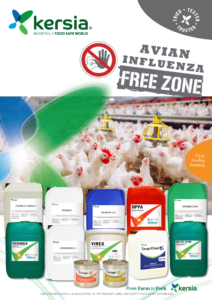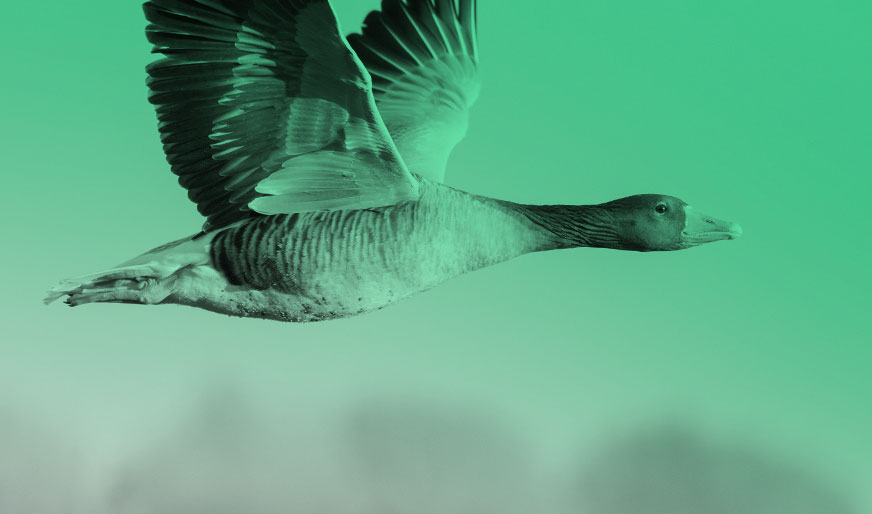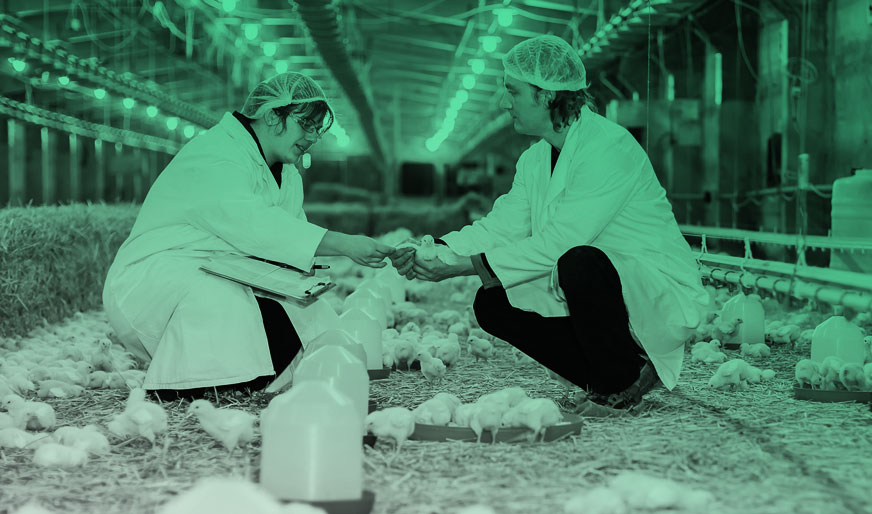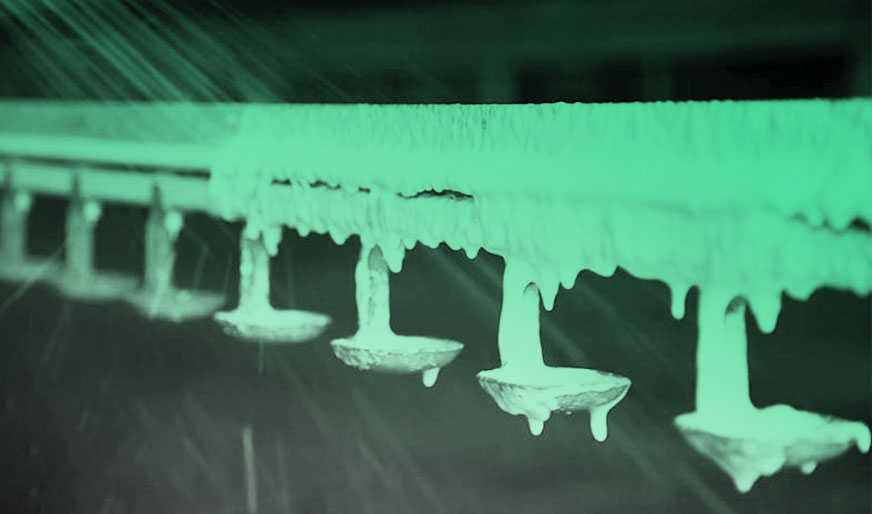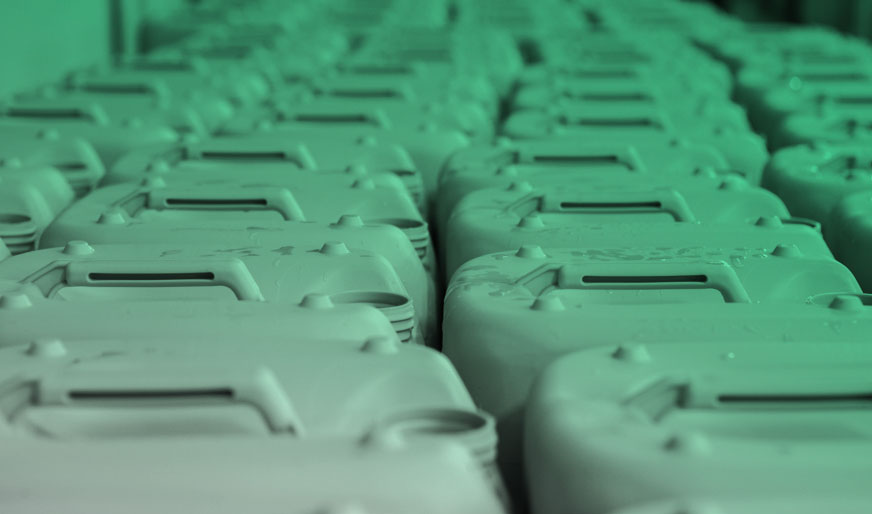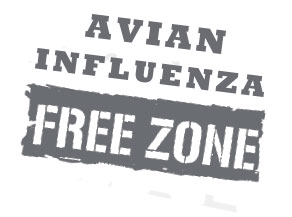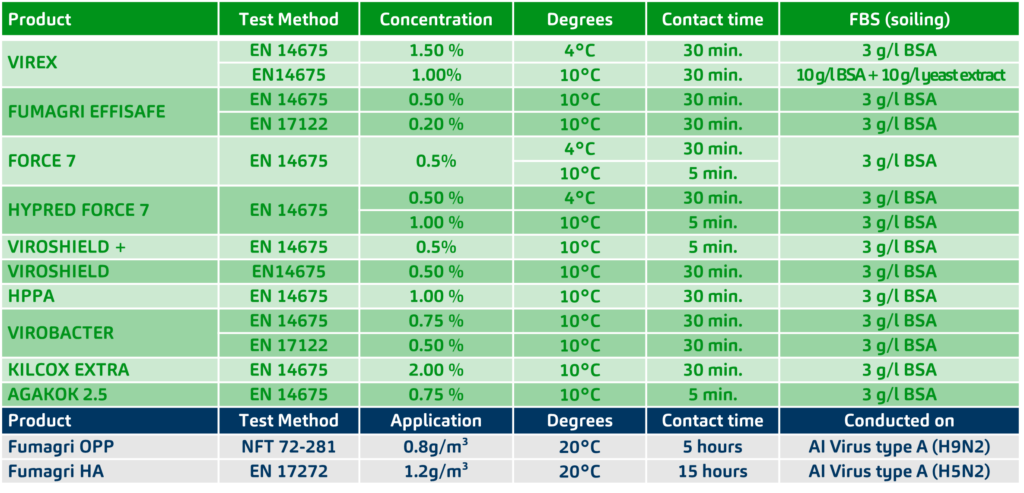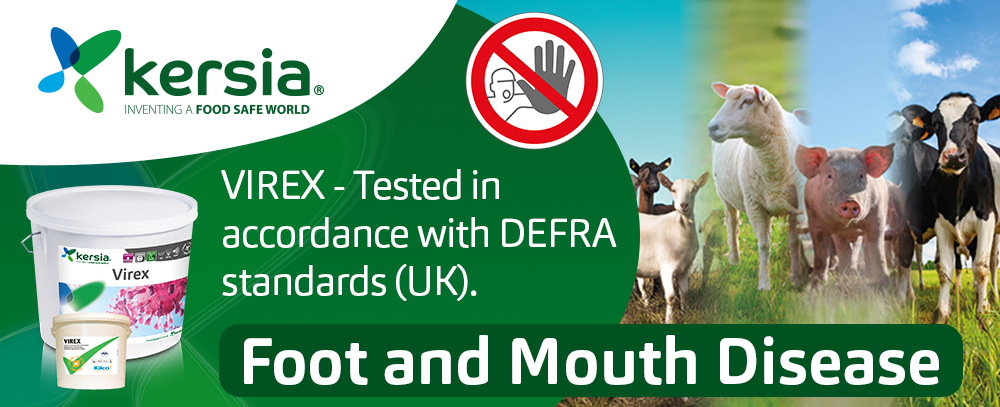Avian Influenza is a highly contagious viral disease affecting several species of food-producing birds (chickens, turkeys, quails, etc.) pet birds and wild birds. Occasionally, mammals including humans may contract avian influenza. (e.g. H5N1 & H7N9 sometimes cause fatal infections in people).
In this context, Kersia is committed to supporting poultry farms through offering complete, comprehensive, tested biosecurity products and solutions, through our “Cleaning, Disinfection and Protection” programs.
Avian Influenza –
General Information
Avian Influenza (AI) is a highly contagious viral disease affecting several species of food-producing birds (chickens, turkeys, quails, etc.) pet birds and wild birds. Occasionally mammals, including humans, may contract avian influenza. Even though most AI viruses do not infect humans, some such as H5N1 and H7N9 had caused fatal infections at people.
There are many AI virus strains, which are usually classified into two categories according to the severity of the disease in poultry:
- low pathogenic (LPAI) strains → cause few or no clinical signs in poultry
- highly pathogenic (HPAI) strains can cause severe clinical signs and potentially high mortality rates among poultry
To date, naturally occurring highly pathogenic avian influenza A viruses that produce acute clinical disease in poultry have been associated with only the H5 and H7 subtypes (e.g. A variety of subtypes including H5N1, H5N2, H5N5, H5N6, H5N8, and H7N9).
Any detection of highly pathogenic avian influenza viruses, or avian influenza viruses of the H5 and H7 subtype (due to their potential for mutation) in poultry holdings during regular surveillance need to be notified and precautionary measures applied to prevent potential avian to human infection.
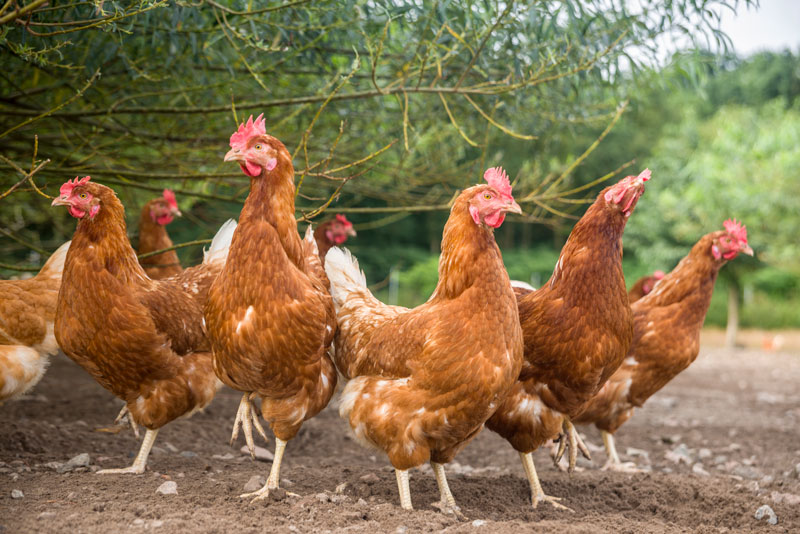
FACT & FIGURES ON AVIAN INFLUENZA
AI Virus – High stability in the environment, highly contagious!
Influenza A viruses can survive:
- Over 30 days at 0°C (32.0°F) (over one month at freezing temperature)
- 6 days at 37°C (98.6°F) (one week at human body temperature)
- decades in permanently frozen lakes
- on hard non porous surface such as plastic or stainless steel for 24 to 48 hours
- on clothes, paper and tissues for 8 to 12 hours
- AI is not transmissible by eating properly prepared poultry and eggs:
- cook thoroughly (cooking at 70°C inactivate H5N1 virus)
- prevent cross-contamination between raw and cooked food.
NOTE: viruses cannot multiply without a “host”, unlike bacteria
Inactivato of the virus occurs under the following conditions:
- 30 minutes @ 60 C (140.0 F)
- Acidic pH conditions
- Presence of specific oxidizing agents such as sodium dodecyl sulphate, lipid solvents, and B propiolactone
- Exposure to specific disinfectants
Avian Influenza – Sources of Contamination
On a farm there are many ways of contamination – external and internal sources might be responsible for an outbreak of a disease. It is essential to check your premises, your work flow structures and your biosecurity program to detect weak spots and adjust accordingly
Strict biosecurity measures and good hygiene practices are essential in protecting against a disease outbreaks and a spreading of this contagious disease.
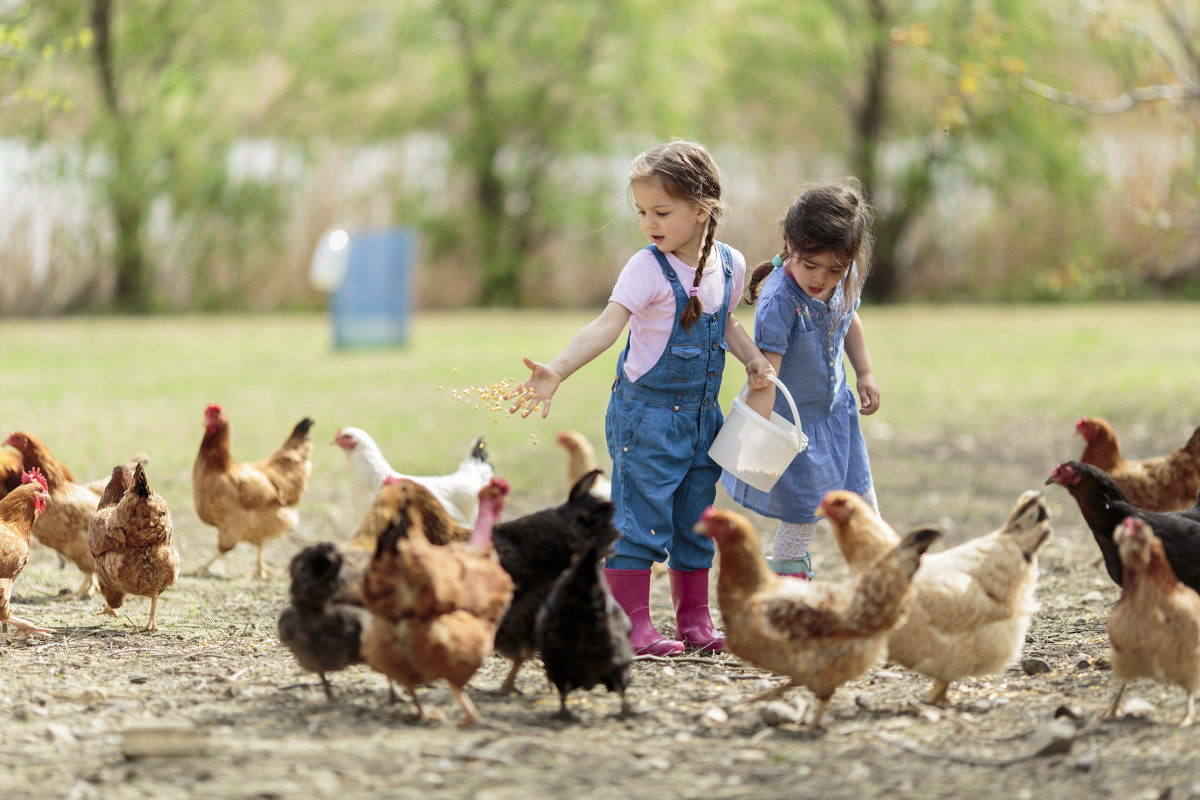
Direct contact
On a farm there are many ways of contamination
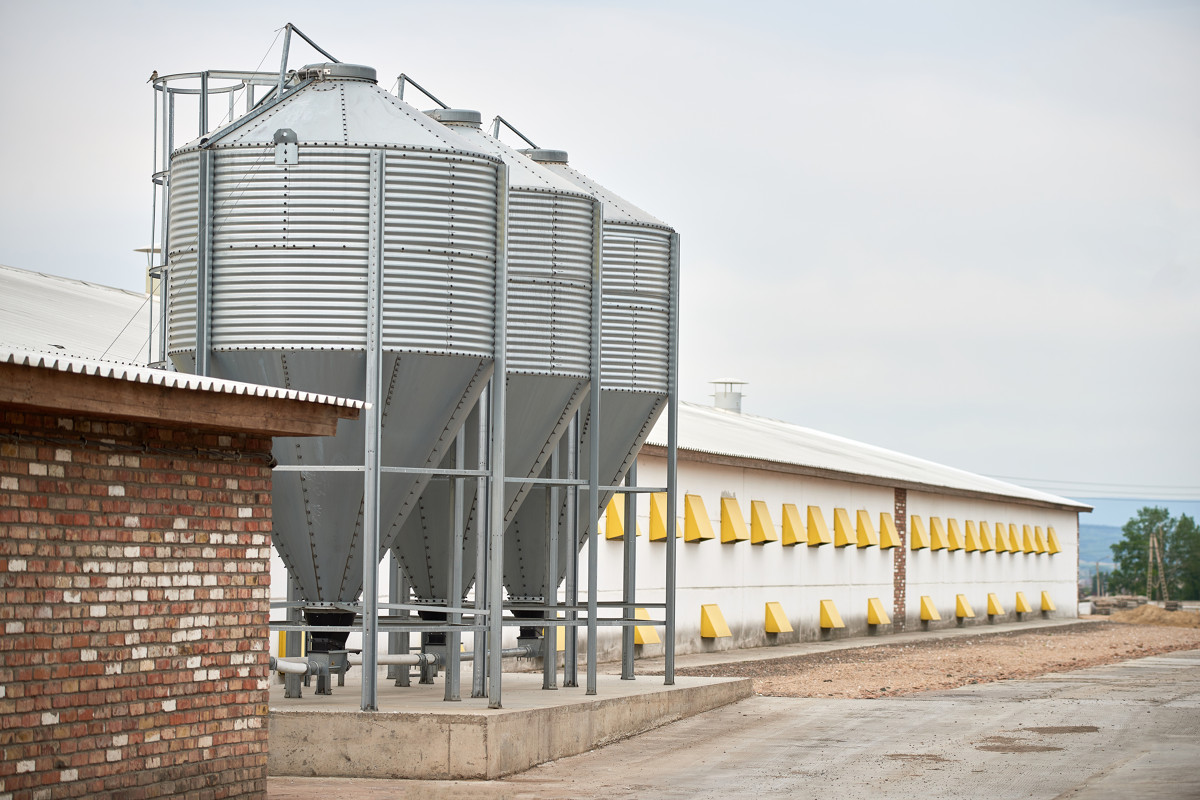
Contaminated feed
On a farm there are many ways of contamination
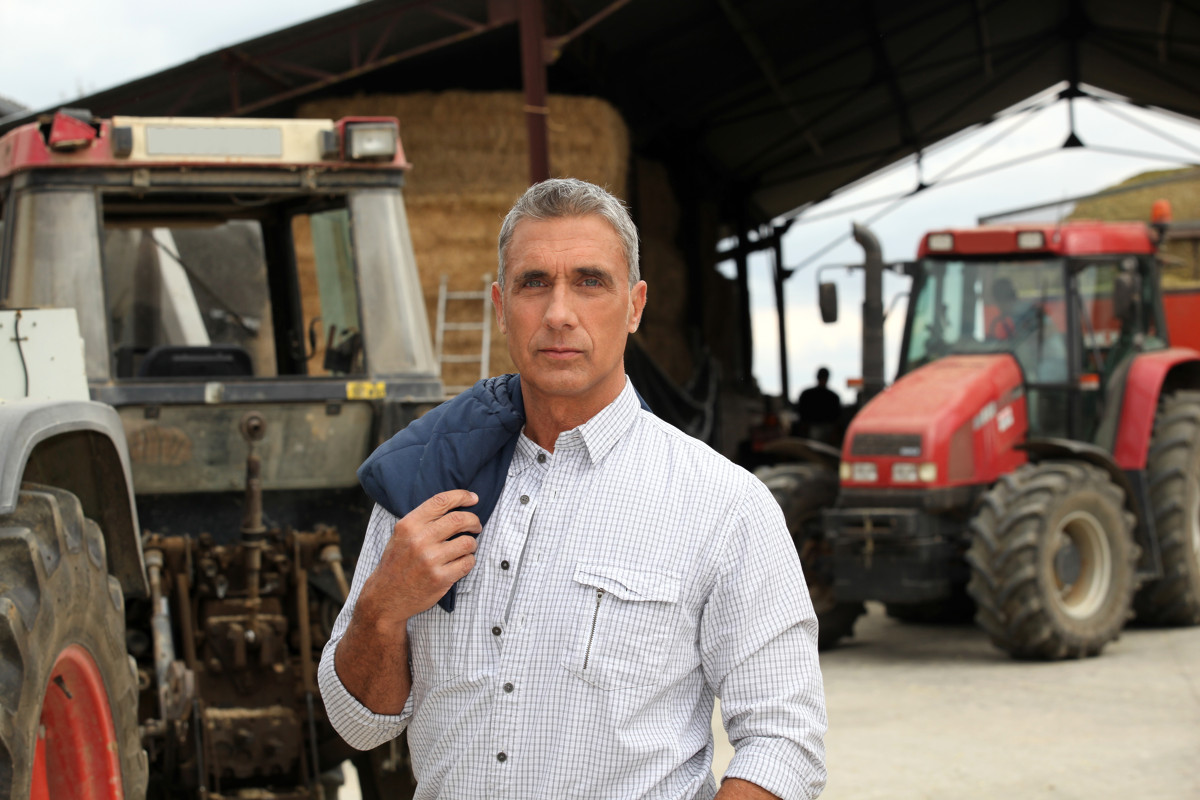
Contaminated fomites
(such as shoes, clothes, vehicles, equipment etc.)
Avoidance Program – Essential Measures
Kersia is committed to supporting poultry farms through offering complete and comprehensive and tested biosecurity products and solutions, through our ‘‘Cleaning, Disinfection and Protection’’ Programs.
Effective cleaning of surfaces and equipment ensures the best possible condition for disinfection.
Successful disinfection is the elimination of micro-organisms through the selection of a proven disinfectant, applied at the correct dilution rate with adequate contact time.
Comprehensive Biosecurity measures are required to prevent micro-organisms from re-entering and contaminating clean buildings and equipment.
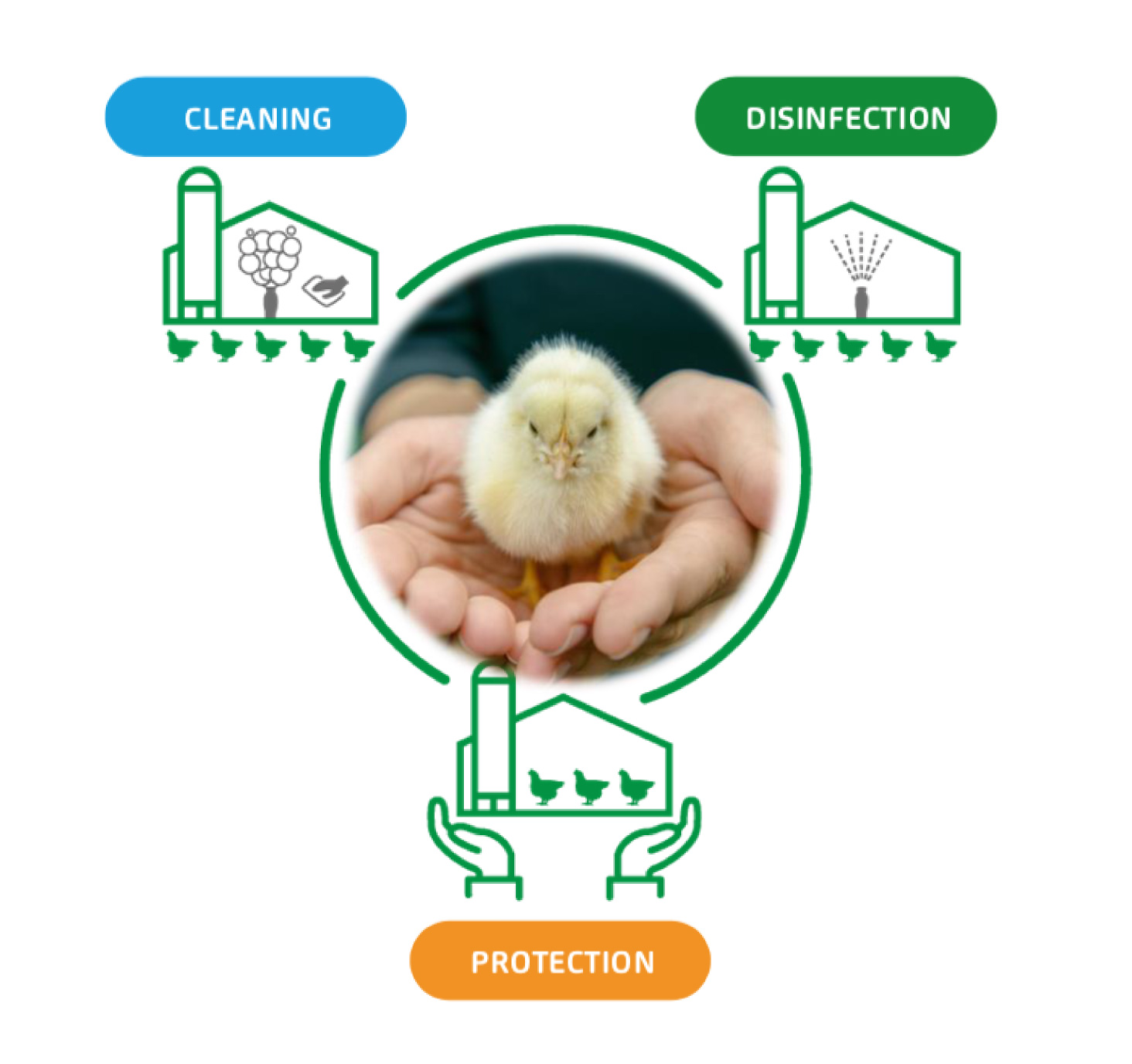

Avoidance is better than cure!
General biosecurity measures
Preventive cleaning, disinfection and protection measures
On farms, ensure the protection of the animals with regards to all the external sources and entrants:
- Control of access to buildings (visitors, staff…): use of personal protective equipment to access livestock buildings – Cleaning and Disinfection procedures.
- Limiting the arrival of external vehicles on site including those used for the transport of animals. Apply Cleaning and Disinfection procedures for vehicles in any case.
- Improvement of building maintenance, pest control, rodent control…
- Improvement of Cleaning and Disinfection procedures on all surfaces of buildings and equipment and the environment in general.
- Monitoring of entrants (food, water…),
- Monitoring animal health (abnormal signs or symptoms…)
If the disease is reported
Confinement – Isolation – Crisis Management
If a case is proven, establishment of a management procedure for hazardous areas including
- Elimination of animals: slaughter of all animals in the premises concerned.
- Isolation and securing of the site: rigorous and controlled confinement and isolation procedures.
- Cleaning and disinfection of premises in collaboration with the competent authorities and selected service providers
Avian Influenza – Active Management
Cleaning, disinfection & protection –
Step-by-Step
1. Cleaning
- Product selection, concentration and application is key to successful cleaning.
- Effective cleaning of surfaces and equipment ensures the best possible condition for disinfection.
2. Disinfection
- Product selection, concentration and application is key to successful disinfection.
- Successful disinfection is the elimination of micro-organisms through the selection of a proven disinfectant, applied at the correct dilution rate with adequate contact time.
3. Protection - by means of hygiene management
- Product selection, concentration and application is key to successful protection.
- Offer possibilities and make it obligatory to disinfect boots, wheels, vehicles, hands and equipment prior to and after entering the premises or different areas of the premises.
- Cleaning and disinfection of the water system & water disinfection
4. Protection - by means of structural management
Implement additional measures to prevent Avian Influenza Virus entering your building:
- Protection against uncontrolled movement and entering (people, vehicles, wild animals) – i.e. keep wild birds outside and your poultry flock inside, fences are intact, lockable gates, etc.
- Limitation of passenger and vehicle traffic to the necessary minimum, keeping a visitor’s book
- Consistent implementation of the “CLEAN and DIRTY zones” principle:
- Enter the premises only with company clothing and prior showering
-
- Street clothing and stable protective clothing are kept separate from each other before and after entering the production areas
- Division of the business premises into “CLEAN” (animals, feed, bedding etc.) and “DIRTY” (manure, carcasses etc.) areas
- Avoid crossing paths, from “DIRTY” and “CLEAN” areas
- Storage of the carcass in a closed container or similar construction, which is secured against unauthorized access and the entry of vermin, rodents, wild animals and the leakage of liquids and which is easy to clean and disinfect
- Relocation of carcasses as close to the road as possible on paved ground that is easy to clean and disinfect, so that the vehicle of the processing plant for animal by-products does not have to drive on the premises
Feed and litter deliveries as well as loading or unloading of animals only take place on the traffic areas (no traffic and access by outside persons in the production areas)
- Feed, bedding & other resources are stored safely protected from wild birds
- Special employee training on the Avian Influenza transmission risks
- Continuous Pest control including documentation
- Continuous animal health monitoring (abnormal signs or symptoms…)
Proven Avian Influenza case
If an Avian Influenza case is proven, a management procedure for hazardous areas include
- Elimination of animals: slaughter of all animals in the premises concerned.
- Isolation and securing of the site: rigorous and controlled confinement and isolation procedures.
- Cleaning and disinfection of premises in collaboration with the competent authorities and selected service providers
Kersia Solutions Against Avian Influenza
